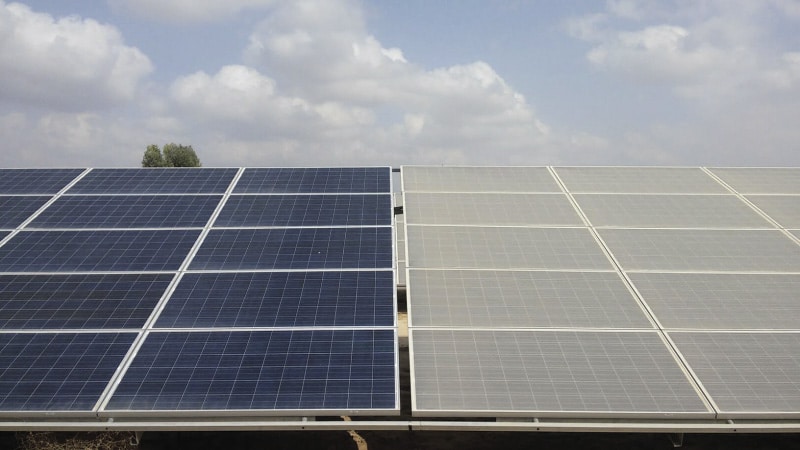Researchers from China’s Ningxia University have investigated dust deposition characteristics on PV panels using a series of wind tunnel experiments. Specifically, they have focused on how variations in tilt angle, mounting height, spacing, and incoming flow direction influence the mass of the accumulated dust and the distribution of different particle sizes.
“The innovative aspect of this study lies in its empirical approach to quantifying the relationships between installation parameters and dust characteristics, thereby offering practical recommendations for enhancing the efficiency and performance of photovoltaic systems in environments prone to dust accumulation,” the team explained.
The wind tunnel used for the experiments had a length of 21 m and a height and width of 1.2 m, respectively. To simulate desert environments, fine dust particles were introduced from the upper section of the wind tunnel at a wind speed of 5 m/s. Four identical PV panels, measuring 670 mm in length and 350 mm in width, were placed in a row inside the tunnel.
“The experiment was conducted over a duration of approximately 14 days, during which the average air temperature was 12 C, and air humidity was 25%, with no recorded precipitation in the period of our experiment,” added the academics. “To ensure the reliability of the results, all tests were conducted in triplicate, and the average value was recorded for analysis.”
Testing for the impact of different panel inclinations, the team has positioned the panels at 0°, 15°, 30°, 35°, 45° and 60°. Per their findings, as the tilt angle increases, dust accumulation on the first panel exhibits a nearly exponential growth pattern, while the latter three panels display an initial increase followed by a decrease.
“The maximum dust accumulation occurs at tilt angles between 30° and 35°. Compared to the dust accumulation at zero tilt angle, the dust accumulation on PV2, PV3, and PV4 can increase by up to 50%, 200%, and 275%, respectively,” the academics said. “These findings suggest that optimizing the inclination angle of PV panels can effectively reduce the impact of dust accumulation.”
Next, the team analyzed the effects of wind direction on dust deposition, testing angles of 0 to 90° between the panels and the wind flow. “The dust deposition mass on PV1 initially increases before subsequently decreasing with changes in wind direction. In contrast, the dust mass on PV2, PV3, and PV4 exhibits an initial increase followed by an exponential decrease as the wind direction angle increases,” they found.
Looking at different mounting heights, the panels in the tunnel were tested at 10 cm, 20 cm, 30 cm, and 40 cm. “A significant discovery of this research is that, when the spacing between panels exceeds twice the panel height, the mutual influence on dust deposition becomes negligible, thus informing best practices for installation spacing,” the group said.
The results were presented in “Dust deposition characteristics on photovoltaic arrays investigated through wind tunnel experiments,” published in Scientific Reports.
This content is protected by copyright and may not be reused. If you want to cooperate with us and would like to reuse some of our content, please contact: editors@pv-magazine.com.



Does dust decrease the output of Solar Cells & to what percentage.?